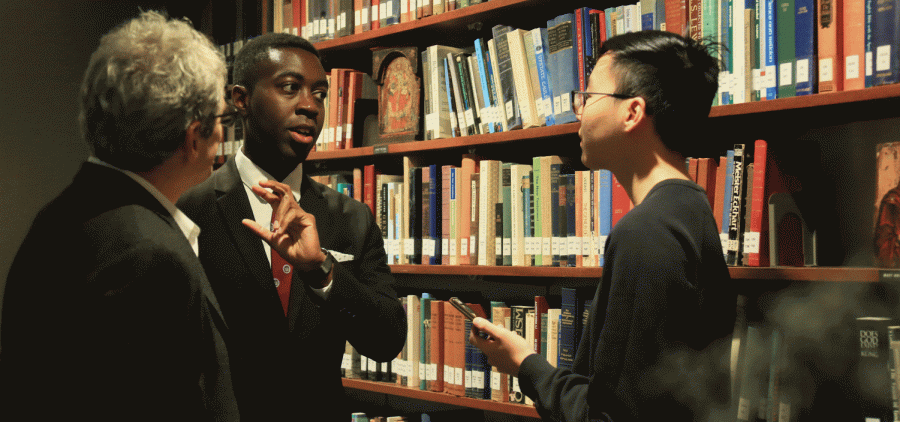African Masks Join Chapel House
Professor of Native American Studies Emerita Carol Ann Lorenz introduced a collection of more than ten African masks and a prayer board to the Chapel House on Wednesday, September 18th. They are featured both in the lobby as well as in the basement alongside other art from around the world. Acquired during her trip to Africa, the pieces originate from Nigeria, Côte d’Ivoire, Gabon, Liberia and the Democratic Republic of Congo. The masks were purchased from dealers and traders and many were in use quite recently, showing that indigenous African religions are still going strong, even in modern society. Each of the masks was individually introduced, and Lorenz detailed the usage and meaning of each. The introduction of the art was followed by a reception.
Although the masks seem to be similar at first, they each are unique and represent the diversity of African cultures that is often overlooked in the West. Their uses range from symbolization of masculinity and femininity to unique representations of individual people. For example, a recently used handwritten Islamic prayer board from a Qur’anic school in Nigeria provides insight into old traditions that still exist today.
It was Director of the Chapel House Steven Kepnes’ idea to introduce African art to the center. This project fits perfectly into the collection at the Chapel House–a place for spiritual and religious life that are marginalized on campus. While the main religions of the world are already well-represented, indigenous religions are not.
“As a scholar of religion I am aware that there are important religions that are often ignored–like African traditional religions–in discussions of what is called the “Great Religions of the World.” So I wanted to procure African religious art as well as Native American Art to supplement our religious art collection at Chapel House,” Kepnes said.
Assistant Director of Programming and Colgate alum Rodney Agnant was instrumental in deciding the placement of the pieces as well as organizing the event.
“I think the placement of the masks was a really important and crucial piece of the organization because of course we’re grateful to have this reception and have people here, but we want it to be the case that whenever we’re not here, the art is presented in such a way that when someone steps in the chapel house they go, ‘Wow, look at what’s represented around.’ Having those two masks in the lobby that show that representation is a really beautiful thing,” Agnant said.
Beyond bringing more diversity, it is hoped that the pieces can enrich the Chapel House through their intriguing presence, with rich stories that reach out to viewers.









